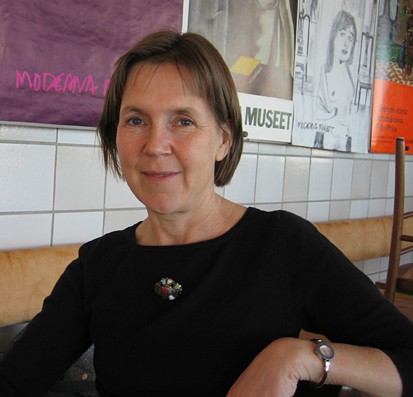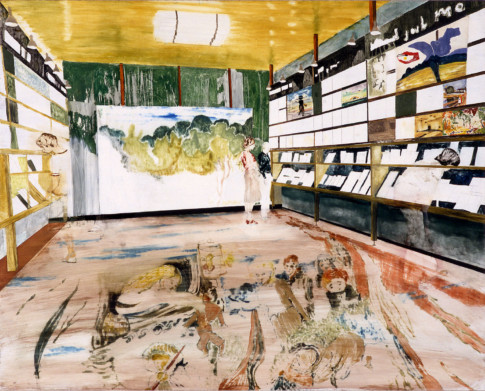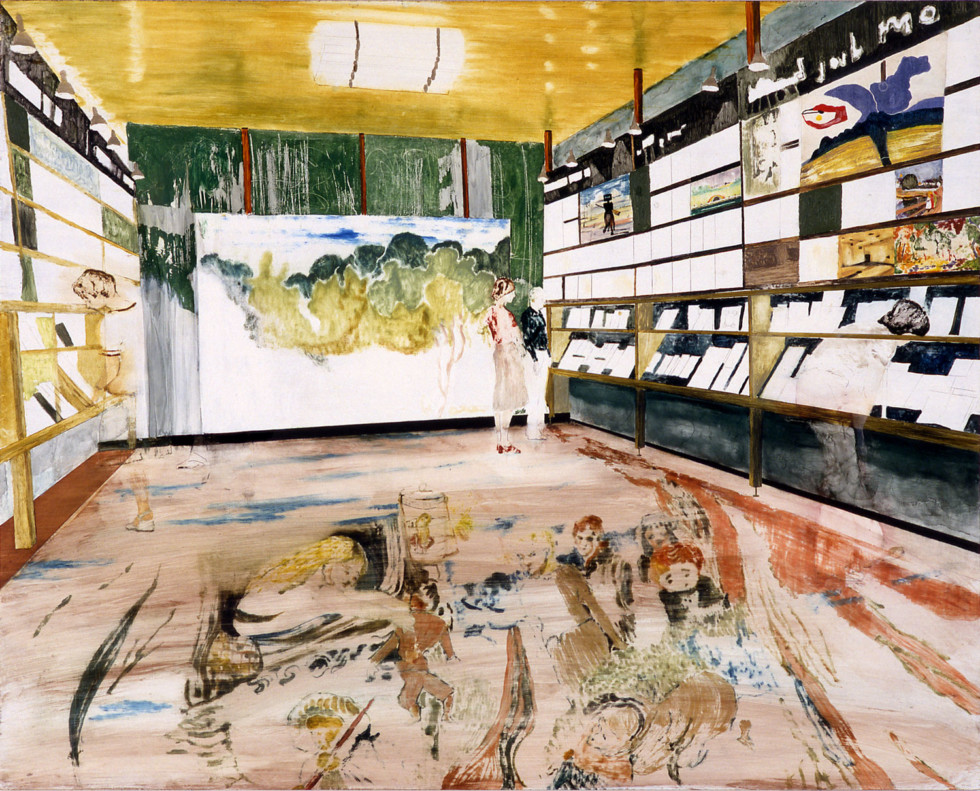
Karin Mamma Andersson, Touched by Gods, 2002 Courtesy of Magnus Karlsson, Stockholm; Stephen Friedman Gallery, London; and David Zwirner, New York © Karin Mamma Andersson / BUS 2007
About some of the works in the exhibition
Touched by Gods,
Time and space are two different dimensions. In Karin Mamma Andersson’s works they concur. The pictorial plane is a stage for parallel developments in the painting’s own inherent logic. Touched by the Gods shows a museum shop familiar to any visitor to modern art museums. And yet unfamiliar, for a half-finished painting is leaned against the backdrop, and the shelves are stacked with paintings by the likes of Sidney Nolan and Peter Doig. At the far end, a couple are blandly perusing at a few faded posters, while two boys are standing in self-absorption, each on his own. But the pivotal point of the painting, apparently unseen by the couple and the boys, is an event sketched out on the floor. The stillness and the contemplative calm in the periphery of the room is contrasted with the dynamic movement of the floor. A hint of Ernst Josephson’s painting The Assassination of Riccio has invaded the canvas. It billows, flows, vibrates, images merge only to separate again, the gods run amok.

The Blank Memories Always Open From the South
This is a serene painting, timelessness has settled on the singed ruin landscape. The colour has stopped, the canvas has absorbed the liquids, washes and pigments. The moment is freeze-framed. The ridges of cloud are no longer moving, they are as immobile as the breathless water. The view of a possible classical city proves on closer inspection to consist of symmetrical repetitions. Corbelled buildings, reduced to a rhythmic band that is reflected in water of even greater abstraction. In the foreground are smooth birch trunks, providing vertical albeit broken support to the panorama. And where the artist’s signature would normally be found, there is a sewage plant of strange formations, a small copse of industrial waste – or perhaps a stockpile of Picasso sculptures? The memory gaps open in every direction.
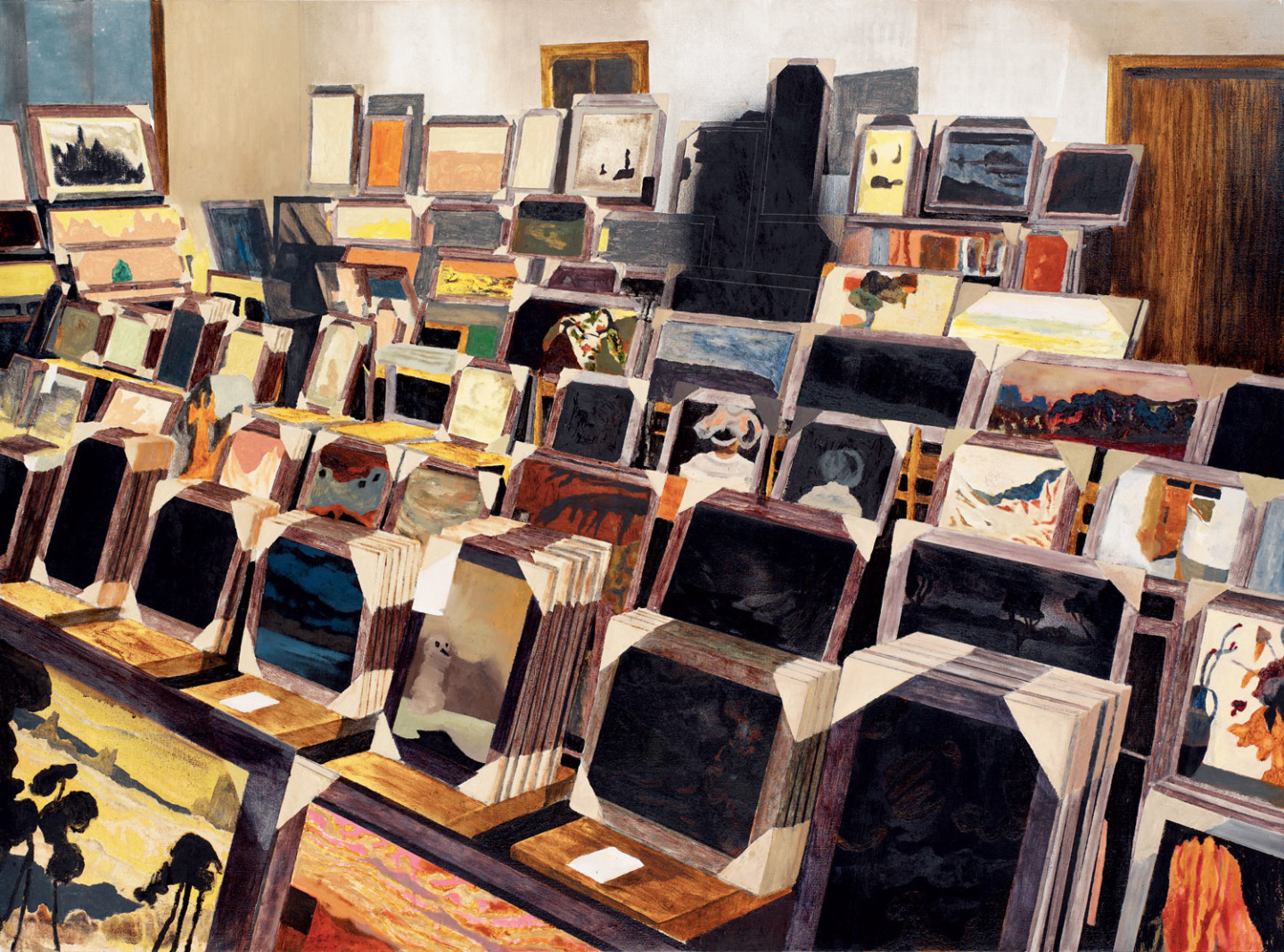
Collect One’s Thoughts
The paintings are stacked on the floor; it is hard to move in this room. The corners of the frames are protected, the canvasses are grouped according to size – there appear to be several of the same format. A large quantity, but an organised quantity, standing at the ready for all the possibilities that the art scene offers and demands: galleries, biennials, collectors, museums. Karin Mamma Andersson’s own studio and depot are rather empty, she works methodically and intensively but will never be prolific; every canvas has its demands. There is something that reminds us of a colourful rag carpet here, with sharp contrasts and unexpected combinations, and a smile of recognition – look, a scrap of that old nightie woven into the edge! Gather Your Thoughts brings together the legacy of modern art, among the abstractions and fragments of landscapes stands a white snowman with a crooked smile.
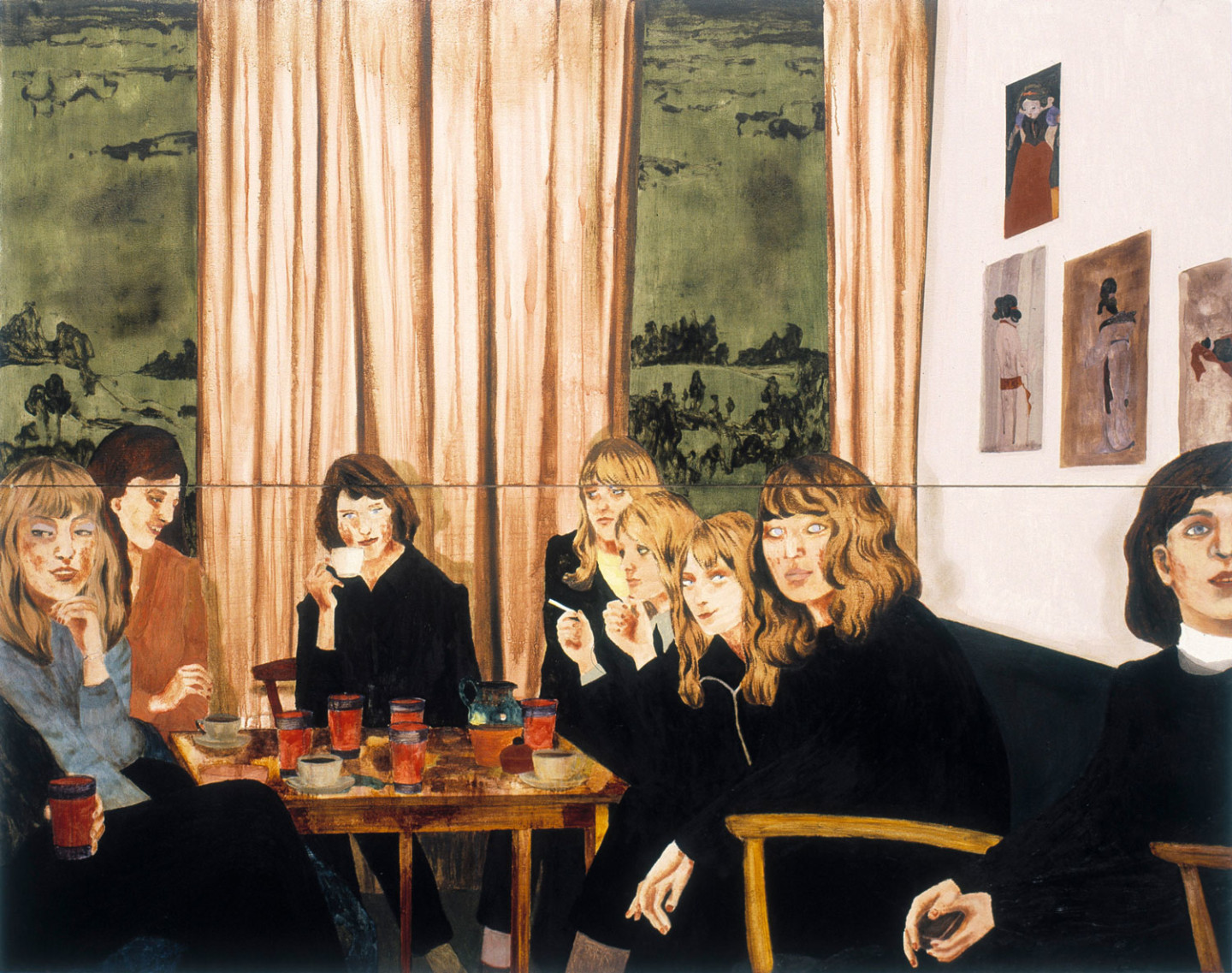
About a girl
It’s crowded around the table. Nine women are seated there. Three of them have dark hair and appear to be slightly older. One of the girls is cut out of the picture and we cannot see her face. There are six red mugs, there weren’t enough to go round so they are complemented with three white coffee cups. The table top is shiny, order prevails. The thick curtain behind falls in heavy folds, outside a greenish landscape appears as in another world, beyond the density of the room. Pictures of geishas are pinned up on the wall, their kimono-clad figures turned away from the onlooker. Above is a picture of Snow-White, she looks down at the geishas and the women around the table. All photo albums contain compositions of this kind: people gathered round a table, someone leaning out and being cut out of the picture. One hand and a red mug is all that is left of one visitor that late autumn in 1973; perhaps her name was Karin Andersson?

